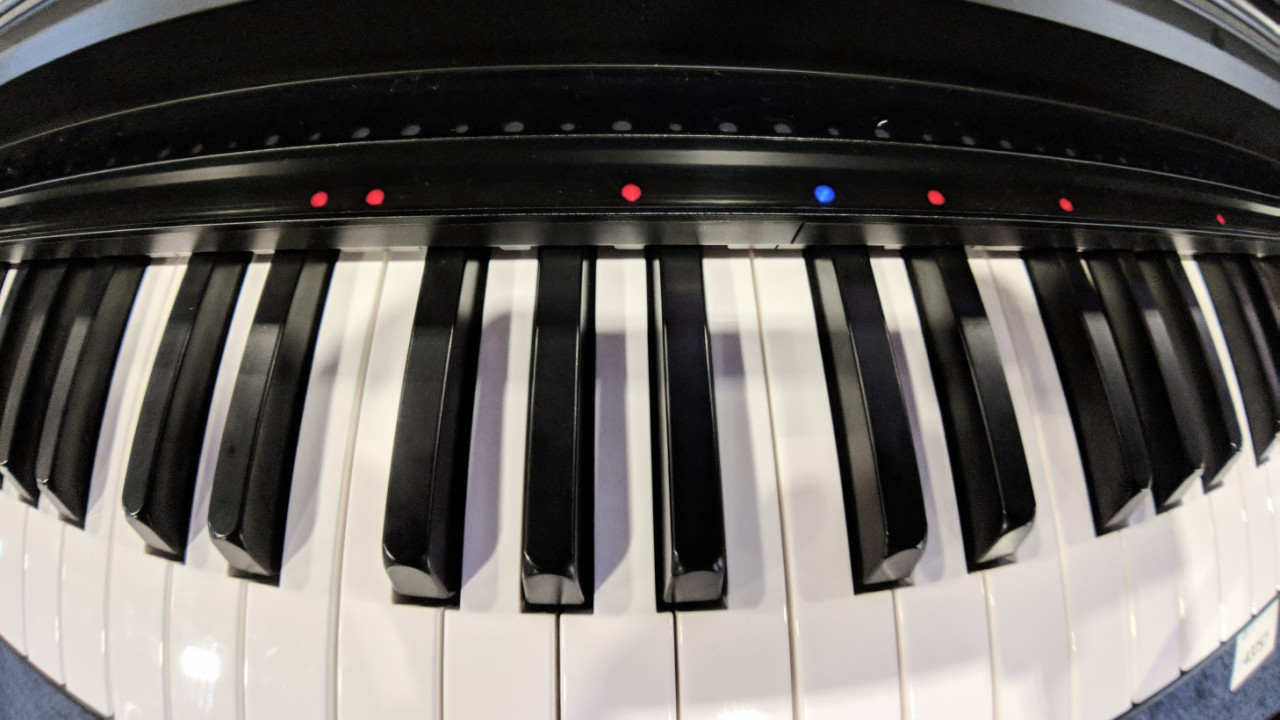
Teaching yourself to play piano can be pretty daunting. I should know; I’m currently in the process. That’s why I’m curious anytime I come across a new resource to make the journey easier – like this gadget called the Piano Hi-Lite I came across at CES. It uses guide lights to tell you which notes to play when learning a new piece.
The device is basically a long strip of LED lights designed to fit any standard 88-key piano, slotting in between the black keys while leaving you enough room to play unimpeded. It uses lasers to detect when the keys have been pressed, and can connect to your smartphone or tablet via Bluetooth or a cable.
It also has the bonus functionality of adding MIDI capabilities to a traditional piano, though it’s not clear if this includes velocity sensitivity.
Once attached and connected to the company’s app, you can choose from a selection of sheet music, lessons, games, or Synthesia videos to learn to play new songs. The Hi-Lite is a natural follow-up to the company’s previous ‘Smart’ pianos which have the similar light-up and app functionality built-in.
There are a few caveats to keep in mind. Some might argue that your eyes should only be on the keys themselves or your sheet music when learning to play. Traditionalists might scoff at the idea of teaching yourself to play piano at all – “get a teacher” seems to always be the first bit of advice online. And $269 is a lot to pay when people have been learning piano for years without fancy LED lights.
Still, I think it’s still a useful tool for kids and beginners developing muscle memory or to help speed up learning new pieces. I learned my first few piano pieces on an old light-up Casio keyboard long before I could potentially afford lessons.
Besides, it’s not a permanent fixture; the company suggests you learn to play the songs with the lights and then turn them off when you’ve developed the muscle memory.
$269 is a pretty hefty price tag to pay, and I didn’t get enough time with the device to personally give it a recommendation. Still, if you already have a piano/keyboard and want to learn or have kids that do, it might just save you some money on those first few lessons.
Get the TNW newsletter
Get the most important tech news in your inbox each week.




